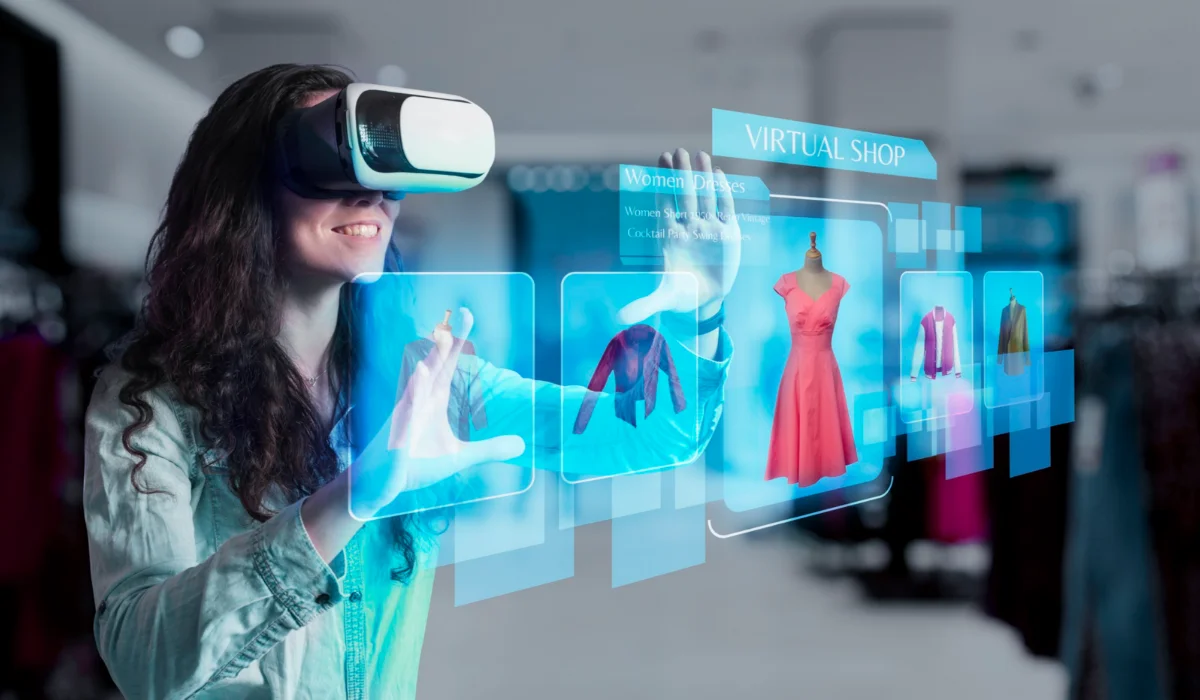Let’s face it: online shopping is somewhat about those bare transactions. It really is a click, a scroll, a few clicks to add to the art, and then rinse and repeat. Although it has become as convenient as ever, online retail always seems to lack experience, the excitement of finding a product, the physical excitement of testing, and even the buzz from browsing with friends.
So what if it were possible to bring the best of both worlds, the greatest convenience of shopping online with the thrill of actual experience in a brick-and-mortar store? And this is just why virtual reality store platforms and 3D shopping experiences are set to steer the future of retail.
It’s not just another technology trend. It’s a seismic shift concerning how brands reach out to customers, solve pain points, and position themselves in a crowded marketplace.
The Death of Guesswork Shopping
Raise your hand if you’ve ever ordered a dress online that looked nothing like the photos. Or buy a couch that clashes with your rug. You’re not alone, 30% of online purchases are returned, often due to mismatched expectations.
Turn on a VR headset, and somehow, you find yourself in a fancy shop with rows upon rows of high-end luxury items. You grab a handbag, zoom in closer to the fine leather grain, and tilt it to see how the light catches the hardware.
Every detail is crisp; every angle is available for one’s precise scrutiny, just like in a real store, but without having to set foot out of the house. Or visualize a sectional sofa in your living room, tweaking its color to match your walls.
This isn’t a gimmick, it’s problem-solving. Retailers like Wayfair and Sephora already use virtual reality service tools to let customers try products in their spaces, slashing return rates by up to 40%.
The takeaway? When shoppers can interact with products in a virtual reality store, they buy with confidence. And confidence translates to loyalty.
Retail Therapy, Reimagined
Remember wandering through a mall with friends, debating outfits, or testing gadgets? Traditional e-commerce killed that communal vibe. But 3D shopping is bringing it back, with a futuristic twist.
For retailers, this social layer isn’t just fun, it’s lucrative. Group buying dynamics and FOMO-driven launches drive higher conversion rates. For customers? It’s shopping as entertainment, not a chore.
Personalization That Feels Personal
Algorithms recommending products based on your last search? That’s so 2020. The next frontier is hyper-personalized virtual shopping environments that adapt to you in real-time.
Think of a virtual reality store that remembers your shoe size, preferred colors, and even your allergies (no more wool sweaters if you’re sensitive). A skincare brand could offer a VR consultation where a virtual dermatologist analyzes your skin and suggests tailored products. Or a grocery chain might design a digital aisle stocked only with gluten-free, keto-friendly snacks because it knows your dietary preferences.
This isn’t just about convenience, it’s about relevance. When every interaction feels curated, customers spend more time (and money) in your ecosystem.
Breaking Down Barriers (No Headset Required)
The tech is evolving fast, and becoming shockingly accessible. Smartphone-based VR tools, like Google Cardboard, let users explore 3D shopping environments with devices they already own.
WebXR technology allows browsers to render immersive experiences without downloads. Even social media platforms are jumping in: Instagram’s AR try-on filters have been used by over 600 million people.
The Human Touch in a Digital World
Virtual shopping isn’t about replacing human interaction. It’s about enhancing it.
Take high-ticket purchases like cars or real estate. A virtual reality service can connect shoppers to live agents within the VR environment. Imagine touring a digital home with a realtor who highlights features, answers questions, and negotiates pricing, all without leaving your couch. Or a luxury watch brand offering VIP virtual appointments where experts guide you through craftsmanship details.
The Catch? Don’t Be Late to the Party
The pitfalls? Early adoption hurdles. Developing a seamless virtual reality store requires expertise, and bad UX design can frustrate users faster than a slow-loading website. And while Gen Z embraces immersive tech, older demographics may need gentle onboarding.
Final Word:
Virtual reality isn’t a distant maybe for retail, it’s a present-day imperative. From reducing returns to fostering community, the ROI is tangible. But beyond metrics, it’s about storytelling.
The virtual reality store is not just a sales station but an arena for brands to sparkle, enlighten, and connect. Where do you step in? Start small.
And for the partner that can take this vision into the real world, look no further than Limina Studios. Based in Dubai, we are creating wedding bells for many of the virtual reality service innovations where technology and human-centered design flourish.
The future of retail isn’t about choosing between physical and digital. It’s about fusing both into something greater, and the clocks are already ticking.






















